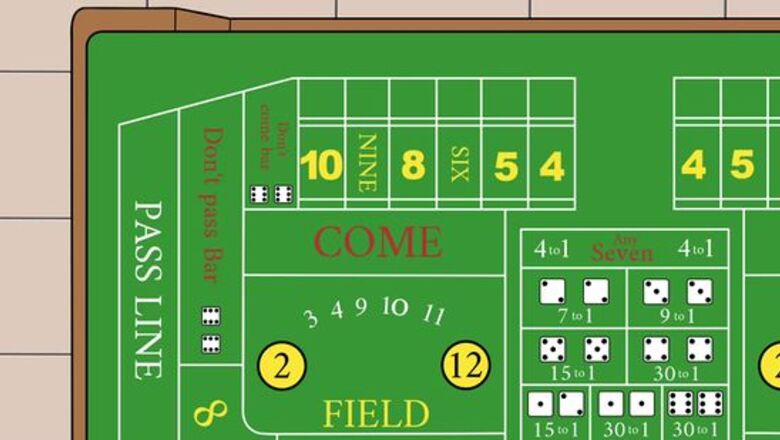
views
How to Play
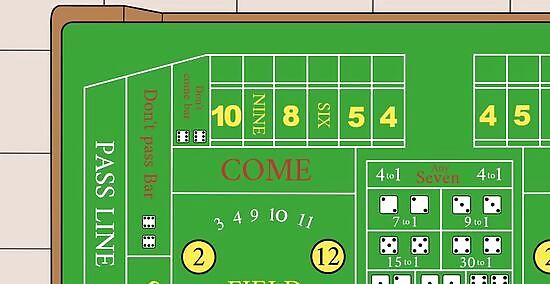
Win money by betting on what numbers are rolled on a pair of dice. Craps really isn’t complicated when you remember that the entire point is gambling on the sum on a pair of dice. One player rolls the dice, typically trying to get a 7 or 11. If they don’t get this number on the first roll, they establish a “point” number that they have to roll again before rolling a 7. Generally, you bet with the table in the hopes that the player rolls the number they need. There are also some options for betting against the table, meaning the player rolls a losing number. On the first roll, called a come-out roll, 7 and 11 are winners. The numbers 2, 3, and 12 are called craps numbers and mean bettors lose. The winning and losing numbers vary depending on the stage of the game. If the player establishes a point, 7 becomes a losing number.
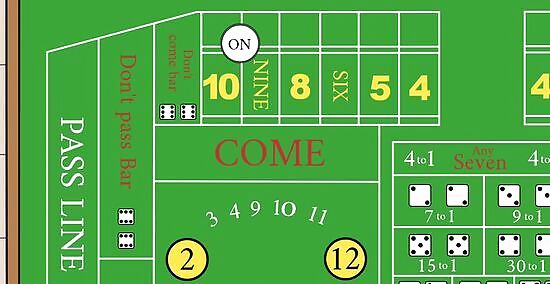
Place a bet on the pass line to play during the come-out roll. The dealer lays a disk on the table to keep track of the game. If you see the disk flipped to the black side with the word “OFF,” you know a new round is starting. On the first roll, the come-out roll, a 7 or an 11 means everyone who bet on the pass line wins. A 2, 3, or 12 means everyone loses. The pass line is the most basic element in craps betting, so it’s the best place to start when learning the game. A new round cannot begin until someone places a bet on the pass. Numbers like 4, 5, and 6 are neither wins nor losses. The rolled number becomes known as the point, and the game moves to the next phase of play. Another option is to bet on the don’t pass line. If you take this option, you’re betting against everyone else. You win if the shooter rolls a 2 or 3 but lose if they roll a 7 or 11.
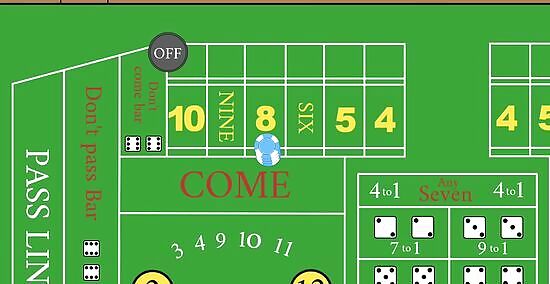
Play the point if no one wins or loses on the come-out roll. The point is the number the player rolled if they didn’t win or lose on the come-out roll. The potential point numbers are 4, 5, 6, 8, 9, or 10. The dealer flips the disk to the white “ON” side, and then the shooter continues to roll the dice in the hopes of rolling the point number again. Rolling a 7 means a loss. The pass line bets stay on the board until the round is over. You win your pass bet if the player rolls their point number. For example, when the point number is an 8, the shooter tries to roll an 8. If the shooter rolls a 7, all pass line bets lose. Play continues until the shooter rolls one of these numbers. If the shooter rolls the point number, play starts over with new pass bets. If a 7 comes up, the same thing happens but someone else has to roll the dice.
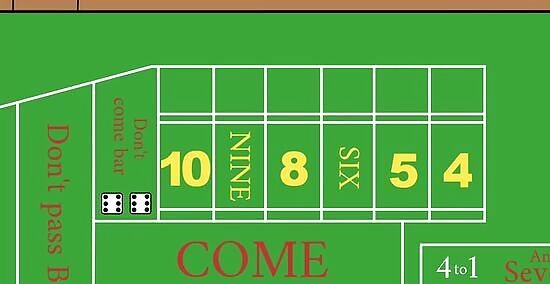
Place a come bet if the come-out roll has already happened. If you get to the craps table after a round starts, you’re in luck. Place your chips on the come space for a bet that is very similar to the pass bet. When the shooter rolls a 7 or 11, you win. If they roll a 2, 3, or 12, you lose your bet. Keep in mind that the point doesn’t affect your bet. If the point is 6, you don’t get anything when the shooter rolls a 6. The come bet is also separate from the pass line. You may win the come bet with a 7 but lose the pass bet after the point is established. Similarly, play may continue even after a 2, 3, or 12 comes up. A related option is the don’t come bet, where you win if the shooter rolls a 7 and lose if they roll their point number. This is a relatively safe and simple bet, but keep in mind that it means going against other bettors.

Start with conservative, basic bets when you begin playing. The line and come bets are the most important bets to know before stepping up to the table. Place some odds bets if you have extra money to spend. If you’re looking to do more, move onto single roll predictions using the field space. Avoid using proposition bets until you’re more comfortable risking your money. Craps is a fast-paced game, so give yourself time to get accustomed to it. Watch for a while if you need to, then start with a basic line bet when you get a chance to step in. These simple bets often have the best odds out of anything in the casino, but they don’t pay as much money as riskier bets. You can also lose more if you’re not careful because of how fast and exciting an average craps game is.
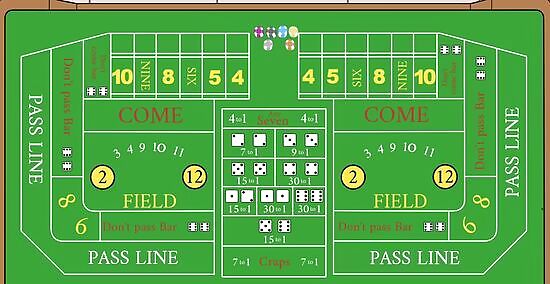
Roll the dice across the table when the stickperson hands them to you. Expect to get a chance to roll the dice if you play at a table long enough. To become the shooter, you have to place a pass or come bet. Generally, the stickperson presents you with 5 dice. Choose the 2 dice you like best and toss them so they hit the rail on the opposite side of the table. Always handle the dice with one hand. You don’t need to blow on them or do anything else you see in movies. Shake and toss! The craps table is long, so you throw the dice rather than roll them. If the dice bounce off the table or fail to hit the back rail, you have to toss them again.
Etiquette
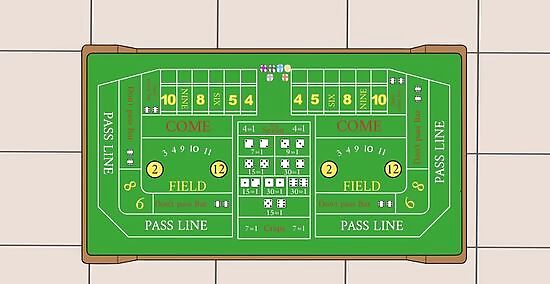
Identify the casino personnel operating the craps table. Because craps tables involve the most money out of any standard casino game, they are managed by teams of workers. A standard team consists of 4 casino employees. Many crews also include a fifth member that rotates in for the other dealers. Each employee is responsible for a different part of the game, such as collecting bets and controlling the game’s tempo. The boxperson sits on one side of the table, usually the one closest to the pit. This person may be wearing a suit and tie. The boxperson keeps tabs on the game, stashing and guarding betting chips. The stickperson is on the opposite side of the table from the boxperson. The stickperson is the one using the long stick to push the dice around. This person controls the game’s tempo, helps bettors place number bets, and calls out the game’s results. The remaining crew members are dealers. There are at least 2 at every busy craps table. They manage the money, converting cash into chips and paying out winning bets as needed.
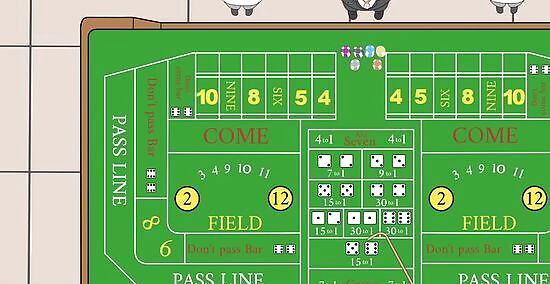
Stand behind the pass line when approaching the table. The pass line is area running around ¾ of the outer edge of the table. It is always opposite of where the stickperson stands. As a player, you stand by the table and place basic bets without relying on the staff. The pass line is where you place your chips to start the game by betting on the come-out roll. The pass line is labeled in big letters, so it’s visible no matter where you stand. The “don’t pass” bar above the pass line is a related betting option. It is for players who wish to bet against the shooter. Also, look for the come and don’t come spaces used for related bets later in the game.
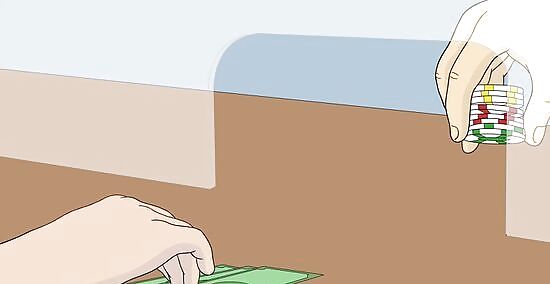
Get some chips at the table before you play. Instead of handing your money to the dealer, cash in for chips. Visit the casino’s exchange counter or speak with one of the dealers at the craps table. Set your money on the table and ask for change. Dealers aren’t permitted to take money directly from your hand. Step up to an active table with caution. Wait for an open spot and try to come in when the disk on the table is flipped to off.
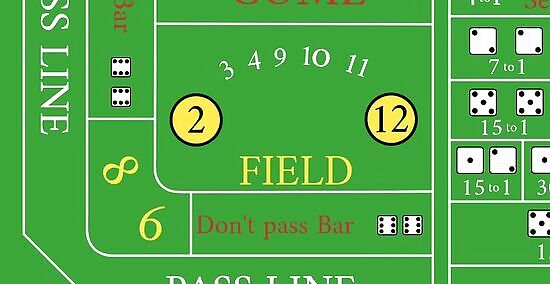
Cheer for other players at the table as they roll. Craps is a group game that can get pretty loud as bettors show enthusiasm for one another. When you’re not rolling the dice, root for the shooter to win the line bet or roll the point as quickly as possible. If you happen to go against the shooter with a don’t pass or don’t come bet, stay quiet to avoid spoiling the fun. The excitement from a craps game is very easy to hear in most casinos. It’s a very loud game, but at the same time, be respectful of everyone around you.
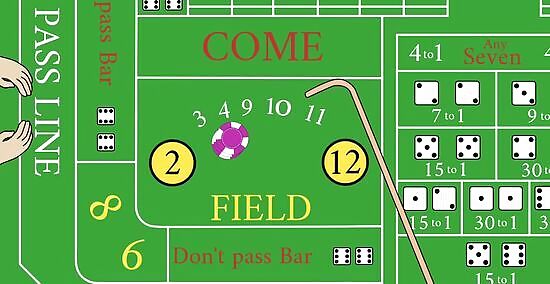
Ask the dealers to help you place bets in off-limits spots on the table. A big part of craps etiquette is dealing with chips and placing bets. In most cases, you handle bets yourself by stacking your chips on a betting space such as the pass line. For propositional bets in the middle of the table and number bets on the stickperson’s side, toss your chips into the open and ask the dealer to move them to the proper space. Once you put your chips down, remove your hands from the table area. Keep your remaining chips on the rail, which is the elevated edge around the table. Watch where all the chips are on the table. Keep an eye on your own chips and avoid knocking over someone else's stack. If you need help, ask the dealers! They are there to help you have a good time shooting craps.
Betting Success
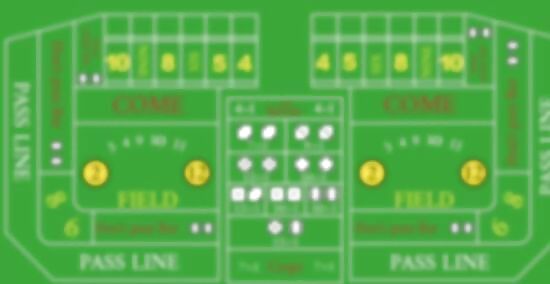
Memorize the odds to increase your chances of winning. Read about the “edge,” or advantage, the house has with each type of bet. A lot of the game revolves around how often a number combination comes up during a roll. The most common number is 7, followed by 6 and 8. The numbers 2 and 12 are least likely to appear because you need a pair of 1s or a pair of 6s, respectively. For example, the house has only a 1.41% edge on a pass or come bet. The house has a 1.36% edge on don’t pass and don’t come bets, making them slightly more likely to pay out. The more complicated the bet, the more likely the odds are to be in the house’s favor. Big 6 and 8 spaces, for instance, pay poorly and tend to be excluded from most tables. Proposition bets are also usually good ways to blow through a stack of chips. For more information on odds and betting strategies, look for a probability guide or betting strategy guide online.
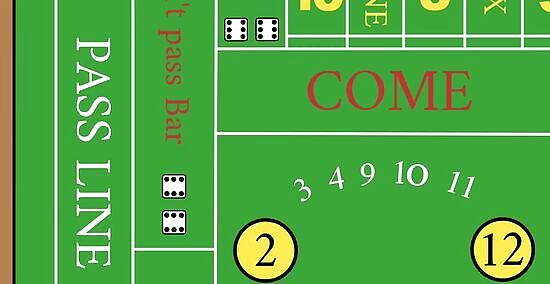
Master some of the common lingo to have an easier time betting. Like many other casino games, craps has its own special terminology. If you know how the table works, you can follow along even without leafing through a craps glossary. However, knowing some of the basic terminology helps a lot when you’re trying to keep your cool out on the casino floor. Craps numbers are 2, 3, and 12. These usually are bad news, depending on the bet. A right bettor is a person betting on the pass line. A wrong bettor is someone who bets against the rest of the table by betting on the don’t pass line. Betting terms like parlay are the same as in other casino games. A parlay, for example, means adding your stakes from a winning bet to another bet. The house edge means how much of an advantage the house has on a given bet. All numbers have their own slang that comes up sometimes but isn’t important to memorize. For example, a pair of 1s is called snake eyes and a 9 is called center field.

Use the field numbers to predict the next roll. The field is one of the most popular betting areas in craps. It is labeled “Field” and has the numbers 2, 3, 4, 9,10, 11, and 12. The numbers near the pass line are for the players to use, so you don’t have to ask for the dealer’s permission to place your bet there. All field bets pay 1:1 odds except 2 and 12. Since these rolls are less common, you win 2:1 or even 3:1, depending on the house rules. The numbers at the top of the table close to the stickperson are for “place” and “buy” bets. They are separate from the field box, so notify a dealer before using these areas to bet. In the corners of the field boxes, you may see spots marked Big 6 and Big 8. These are additional bets that a 6 or 8 comes up before a 7. These spots aren’t present in all craps tables.
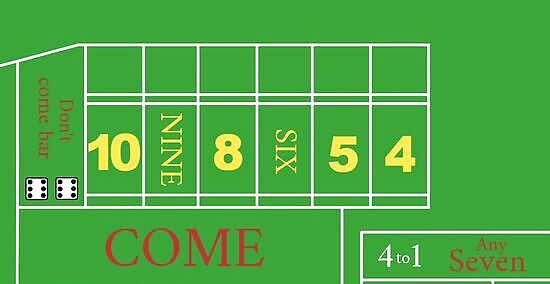
Use the top row of numbers for a place bet. Look for the numbers 4, 5, 6, 8, 9, and 10 near the stickperson. You can make a place bet anytime before the shooter rolls the dice. These place numbers are similar to field bets, except you win if the place number is rolled before a 7. Throw your chips onto the table and tell the dealer what kind of bet you wish to make. For example, if you bet on 4, you’re predicting that the shooter rolls a 4 before they roll a 7. A lay bet is the opposite of a place bet. You bet that the shooter rolls a 7 before they roll the number you bet on. The payout for these bets are not as good as odds bets. You get 1:2 odds on 4 and 10, 2:3 odds on 5 and 9, and 5:6 odds on 6 or 8.
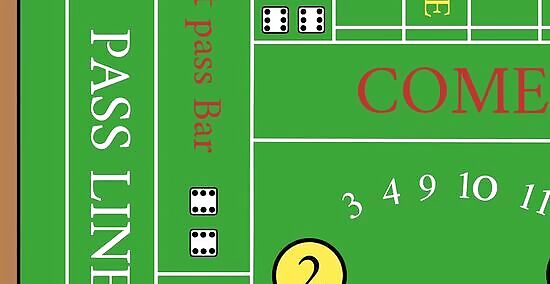
Lay chips below your pass line bet if you wish to make an odds bet. The odds bet is a side game while you wait for the shooter to roll their point number. When you place an odds bet, you guess that the shooter will roll the point number instead of a 7. The odds bet happens only after the come-out roll and you can only do it if you made a line or come bet. Like with the original line bet, play continues until the shooter wins or loses. The payout is better for numbers that come up less frequently. You get 2:1 odds for a 4 or 10, 3:2 odds for a 5 or 9, and 6:5 odds for a 6 or 8. Odds bets are simple and pay true odds. The house has no “edge” on the bet because the roll is entirely random. Winning is up to pure chance. Most casinos offer 3, 4, or even 5x odds tables. That means you get to bet as much as 5 times your pass bet. Some casinos allow even higher odds bets.
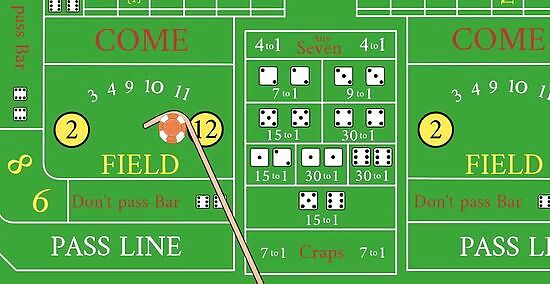
Make proposition bets in the middle of the table. Proposition bets are all single roll bets and they are separate from the main part of the game. Look for the rectangular box in the middle of the table with a bunch of phrases like “5 for 1” and pictures of dice. Once you get more accustomed to the game, take advantage of this area when you wish to place unique bets. For example, you might use the proposition area to predict that the shooter rolls an 8 as a pair of 4s. This is called a hardaway bet. Proposition bets are risky. The odds are very high in favor of the house. As a beginner, you are better off avoiding them unless you’re feeling brave. The proposition area belongs to the dealer, so don’t interfere with it if you wish to bet. Put your chip on the table, then alert the dealer that you wish to bet.
















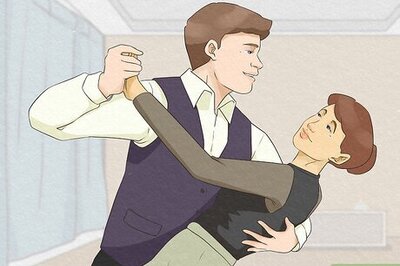

Comments
0 comment